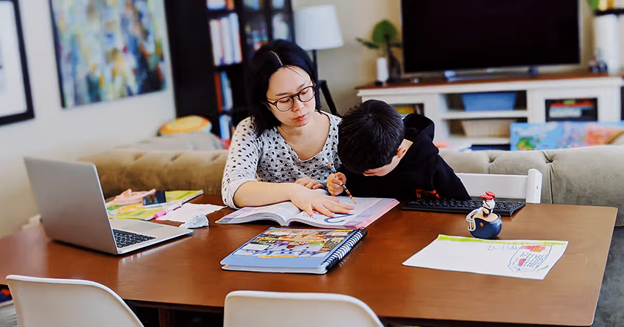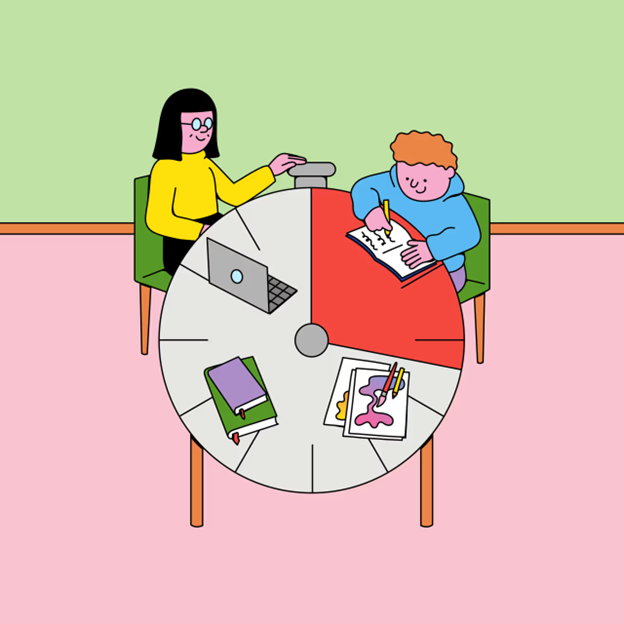Parents of children with ADHD know that the traditional classroom model often misses the mark. Rigid schedules, long lectures, noisy environments, and standardized grading systems can overwhelm or disengage bright, capable learners. That’s why more families are turning to homeschooling—not just for flexibility, but for the chance to create a truly supportive and personalized learning experience.

But here’s the challenge: Not all homeschool programs are built with neurodiverse learners in mind. And for kids with ADHD, curriculum design isn’t just a detail—it’s the difference between frustration and growth.
At Scholars Academy for the Gifted, we’ve developed a K–12 curriculum that meets the needs of students with ADHD and other exceptionalities. Whether your child thrives in our virtual academy, our onsite K–12 programs in Albemarle, NC, or our Dyslexia Scholars Academy, we tailor instruction to support their focus, energy, and unique pace of learning.
So what makes a homeschool curriculum “the best” for kids with ADHD? Let’s break it down.
1. Flexible Structure That Still Provides Routine

Kids with ADHD often do best with predictable rhythms, but not rigid schedules. Too much structure can feel suffocating. Too little? Chaotic.
This approach balances both:
- Classes happen in real-time, not asynchronously, so students are engaged and connected.
- Schedules are clear, yet flexible. If a student needs extra time or wants to work ahead, they can.
- Breaks and transitions are built into the day to prevent cognitive overload.
This structure is especially helpful for kids who need movement, redirection, or time to reset. We meet students where they are—not where a curriculum chart says they “should” be.
2. Curriculum That Emphasizes Engagement Over Compliance

Too often, ADHD learners are told to “just focus” when the real issue is the material itself. If the curriculum isn’t engaging, no amount of willpower will fix that.
That’s why lessons are:
- Hands-on and creative, integrating project-based learning across subjects.
- Infused with real-world applications—science becomes a design challenge, history becomes a role-play simulation, and math becomes a startup pitch.
- Taught by instructors trained to keep energy levels high and redirect attention positively.
We believe focus should be a natural result of curiosity, not a forced behavior.
3. Pace That Matches the Learner, Not the Grade Level

One of the biggest benefits of homeschooling is the ability to let kids learn at their own pace. But not every curriculum supports that. Ours does.
- Subject acceleration is allowed. A student might be in 8th-grade science and 5th-grade language arts—and that’s perfectly okay.
- Skill-based benchmarks are used rather than arbitrary age-based ones.
- Grading is growth-based, not performance-based. Persistence, effort, and creativity are rewarded.
This approach gives ADHD learners the freedom to move ahead in areas they love and get support where they need it—without shame or pressure.
4. Built-In Executive Function Support

Executive function skills—planning, organization, memory, and self-regulation—are often areas of struggle for kids with ADHD. Traditional curricula may demand these skills, but they rarely teach them.
Support is embedded into the day-to-day structure:
- Visual planners and checklists help students track progress.
- Direct instruction in study strategies, time management, and self-monitoring.
- Teachers provide coaching and real-time feedback during class, not just after assignments.
These supports are especially present in specialized academies that serve students with coexisting learning differences.
5. Instructors Who Get It
Many parents worry that homeschooling means isolation. Here, it’s the opposite.
We foster:
- Live, small-group classes with consistent peers.
- Collaborative projects that build teamwork and communication skills.
- Optional in-person meetups, field trips, and student-led initiatives (especially available to local families in North Carolina).
For ADHD learners, these smaller, more intentional social settings often work far better than noisy, overstimulating traditional classrooms.
6. Community Without the Chaos
Many parents worry that homeschooling means isolation. Here, it’s the opposite.
We foster:
- Live, small-group classes with consistent peers.
- Collaborative projects that build teamwork and communication skills.
- Optional in-person meetups, field trips, and student-led initiatives (especially available to local families in North Carolina).
For ADHD learners, these smaller, more intentional social settings often work far better than noisy, overstimulating traditional classrooms.
7. Room for Passion Projects and Creative Pursuits
One of the best ways to unlock focus in an ADHD learner? Let them pursue something they actually care about.
The curriculum allows time for:
- Passion projects, independent studies, and deep dives into student-chosen topics.
- Entrepreneurial or creative outlets—students have built apps, written novels, and launched small businesses as part of their coursework.
- Personalized electives in areas like coding, visual arts, music, and STEM exploration.
These experiences build confidence—and often reveal the student’s future direction.
Final Word: You Don’t Have to Do This Alone
Designing the right homeschool path for a child with ADHD can feel overwhelming. But you don’t have to figure it all out yourself.
We’ve already created a curriculum that understands your child’s brain, meets their needs, and lets their strengths shine.
Whether you’re looking for a full-time K–12 homeschool solution, support for specific learning differences, or a hybrid setup that works with your family’s lifestyle—we’re here.
Let us help your child fall in love with learning again.
